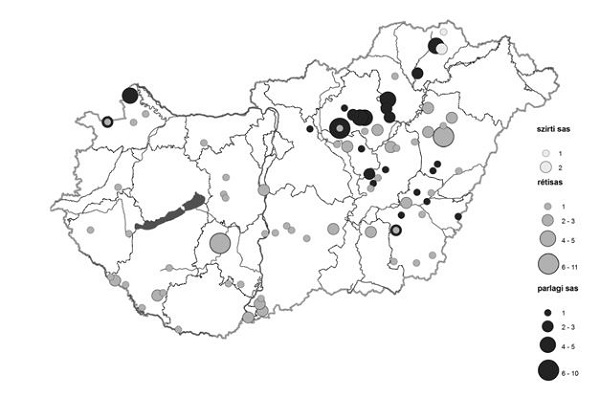Why are Eagles Falling from the Sky? The Fight Against Bird Crime to Save the Eagles of Hungary
Abstract
The Imperial eagle (Aquila heliaca) and the White-tailed sea eagle (Haliaeetus albicilla) are among the most emblematic species of the rich Hungarian avifauna. The Hungarian breeding population of the Imperial eagle is approximately 150 pairs and is one of the most important cohorts of the species in Europe. The White-tailed sea eagle population size is close to 260 breeding pairs and is also very important in this part of Europe. The Golden eagle (Aquila chrysaetos) is a very rare (1–5 pairs) breeding bird in Hungary.
Despite tremendous conservation efforts, many factors threaten these vulnerable populations including habitat loss, disruption of breeding sites, poaching, electrocution and illegal poisoning, with poisoning occurring particularly frequently. A new LIFE Plus project involving the Budapest Zoo and Botanical Garden, is trying to manage poisoning in eagles. Unfortunately, most of the affected birds are found dead and thus, a detailed autopsy and toxicological examination are carried out in order to determine the possible intoxicating agent and the cause of death. A minority of the birds are brought alive to the Rescue Centre at the Budapest Zoo, where a physical examination and x-rays are done. Supportive therapy is initiated immediately and further toxicological examinations are performed depending on the health status of the bird. Our clinical experience demonstrates that some of the intoxicated birds present with typical clinical signs of organochlorines. The most commonly found agent is carbofuran, a pesticide banned in the EU since 2008. Nevertheless, this substance is still commonly used in other parts of the world and very often found as a toxin in poisoned birds.1,2 Clinical signs of carbofuran intoxication in birds include leg spasms, vomiting and distended crops. The administration of atropine at dosages of at least 1 mg/kg is safe and effective even in emaciated birds. In some cases, the administration of atropine provided quick relief, but re-occurrence of the symptoms took place. Atropine can be repeated 2 times/day, but the prolonged effect of the toxins must be monitored thereafter through kidney and liver functions tests. X-rays are extremely helpful to exclude foreign bodies and possible lead poisoning in these cases. Eagles are quite often shot, but bullets or pellets are frequently not related to the acute onset of the clinical signs described above. Nevertheless, the x- rays have an important role in the forensic and legal procedures.
A summary of the intoxicated eagle cases between 1998 and 2012 is shown in Figure 1. The high numbers clearly indicate the huge impact on these bird species and the threatening trend.
Figure 1. Intoxicated eagle cases in Hungary between 1998 and 2012

(szirti sas = Golden Eagle, retisas = White-tailed Sea Eagle, parlagi sas = Imperial Eagle)
Literature Cited
1. Elliott, J. E., K. M. Langelier, P. Mineau, and L. K. Wilson. 1996. Poisoning of bald eagles and red-tailed hawks by carbofuran and fensulfothion in the Fraser Delta of British Columbia, Canada. Journal of Wildlife Diseases. 32:486–491.
2. Kupper, J. A., N. Baumgartner, L. N. Bacciarini, R. Hoop, H. Kupferschmidt, and H. Naegeli. 2007. Carbofuran poisoning in mallard ducks. Schweiz Arch Tierheilkd. 149:517–520.